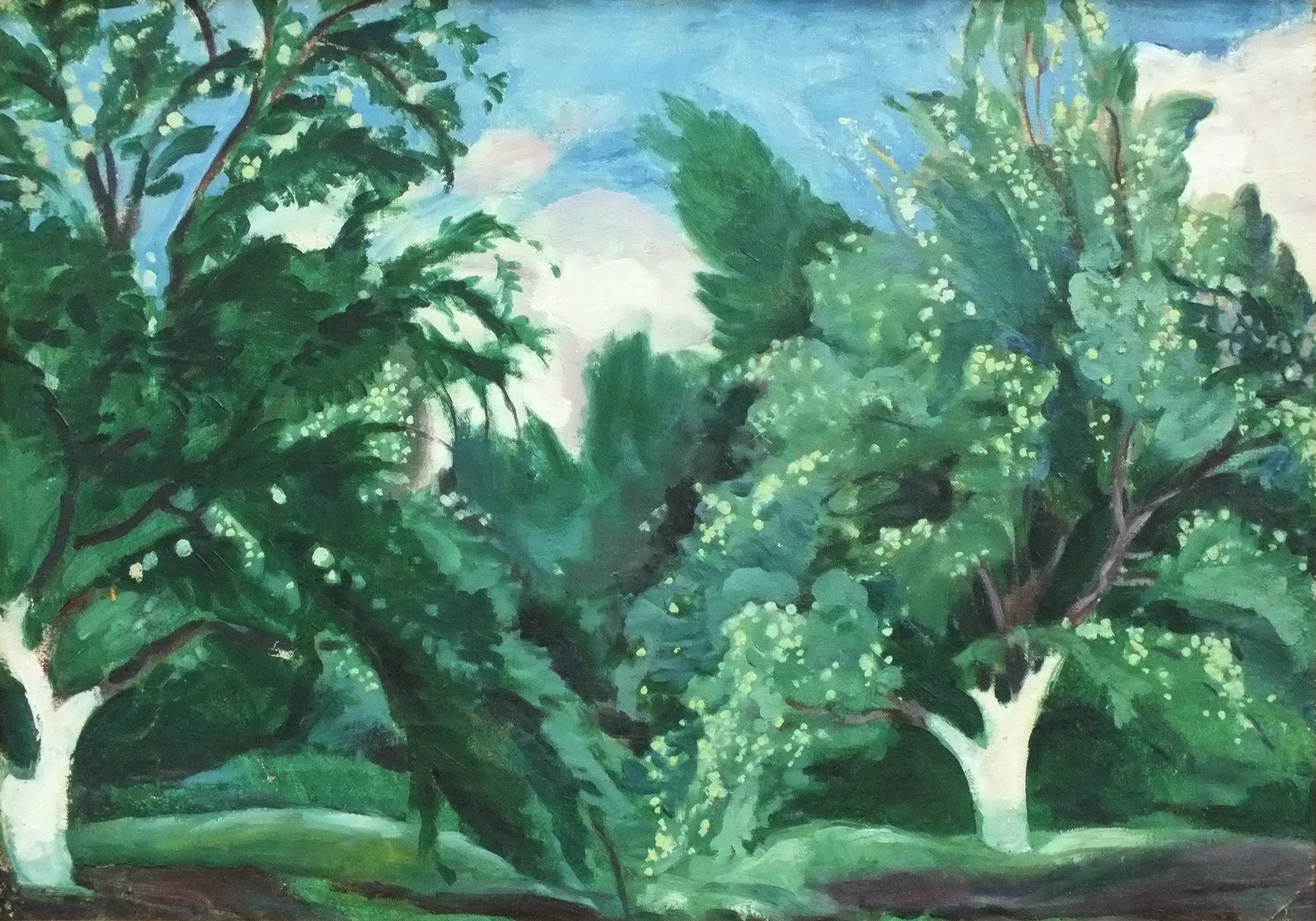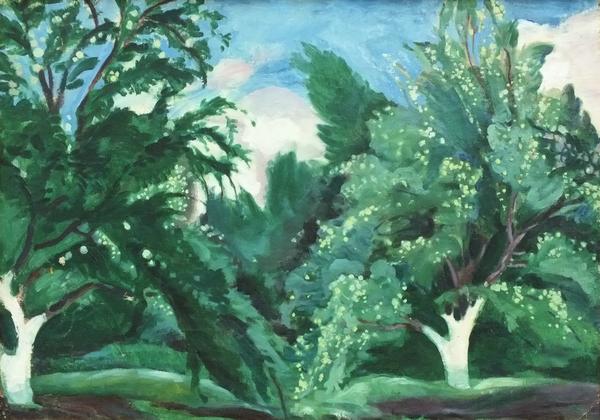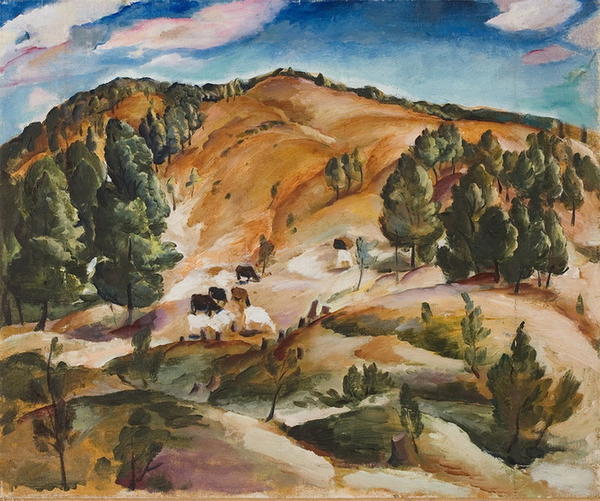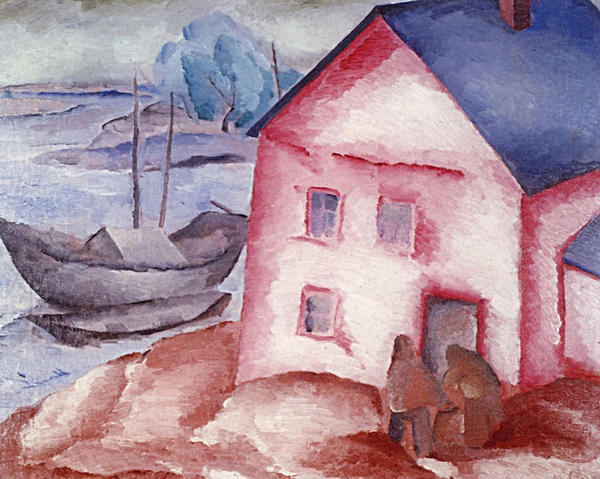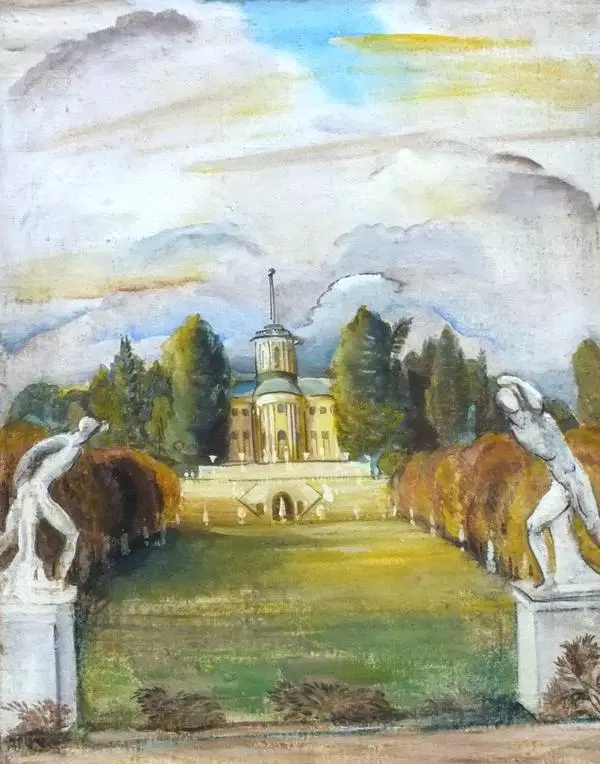In Soviet times, Alexei Kravchenko was known primarily as a graphic artist and talented book illustrator, master of woodblock printing. Nobody, except for his friends and relatives, knew that Kravchenko painted pictures of amazing beauty. The artist did not exhibit his works in public to avoid accusations of supporting bourgeois values, and therefore being anti-Soviet. And, since Kravchenko’s wife was born in a rich merchant family, and his father-in-law was shot in 1919, we can assume that the fears were justified.
In his paintings the artist combines different styles and movements of the early twentieth century, especially strong is the influence of Paul Cézanne. Form and color are the most essential elements of his artwork. Cezanne and his followers were characterized by a conscious distortion of perspective, curved lines, bright color contrasts.
Kravchenko’s works of art are the gate to another world, the world of magical forests and bizarre countries. The artist manages to create this feeling by distorting the proportions of objects and using unusual colors. Emerald green, crimson-red, lilac-blue, earthy-brown – bright and life-affirming pictures of Kravchenko are full of optimism and love for life in all its manifestations.
The artist experiments with unexpected angles and perspectives, panoramic views.
He often uses a gentle lyrical palette in combination with an expressive line that gives an original, authorial reflection of reality.
He often uses a gentle lyrical palette in combination with an expressive line that gives an original, authorial reflection of reality.
Despite the fact that Kravchenko continued to paint during all his life, he never exhibited his fantastic pink and blue paintings. The artist showed his works only to close friends, fearing accusations of ‘bourgeois formalism’ and subsequent political conclusions. Paintings produced by him after the revolution of 1917 were first shown in 1973 in the halls of the USSR Academy of Arts in Moscow.
